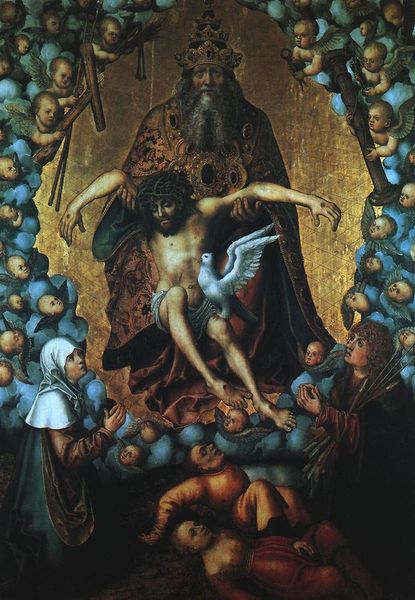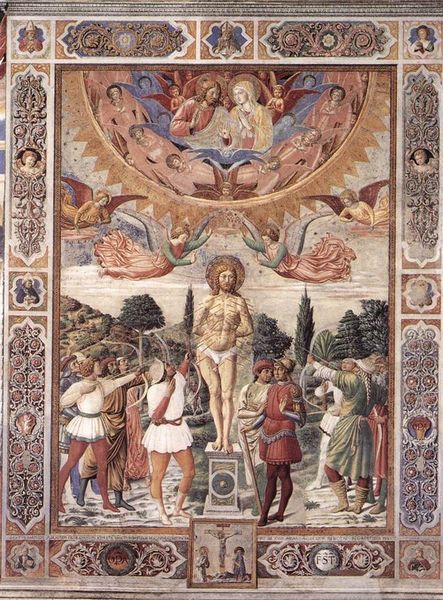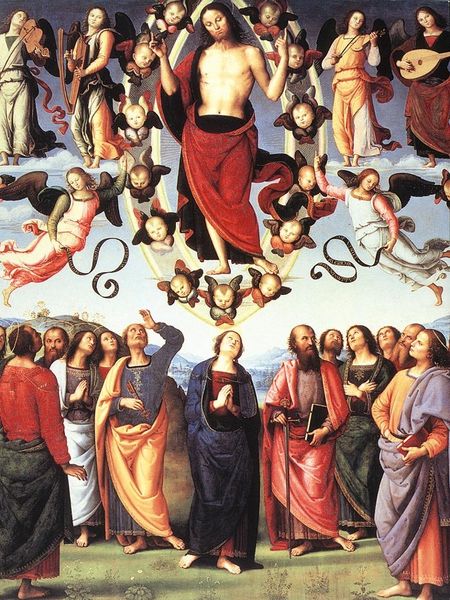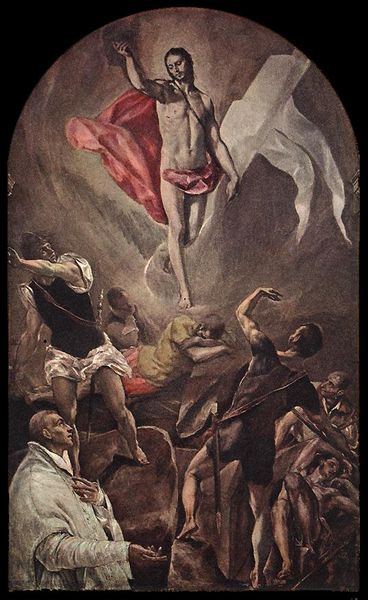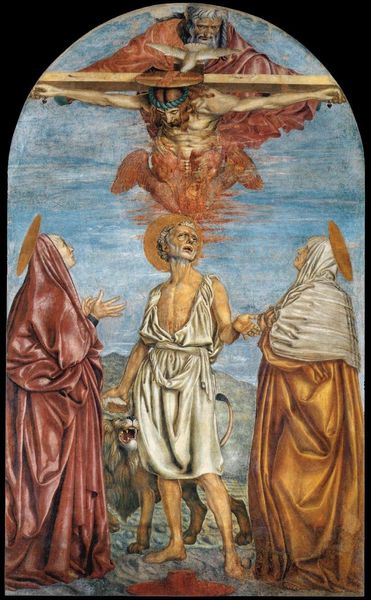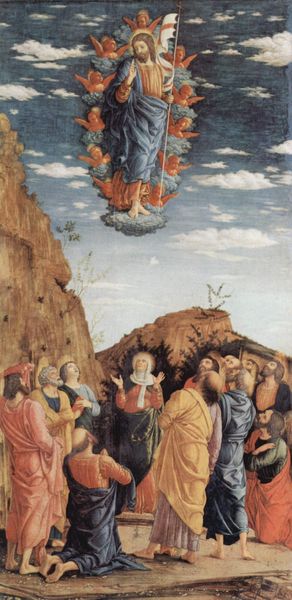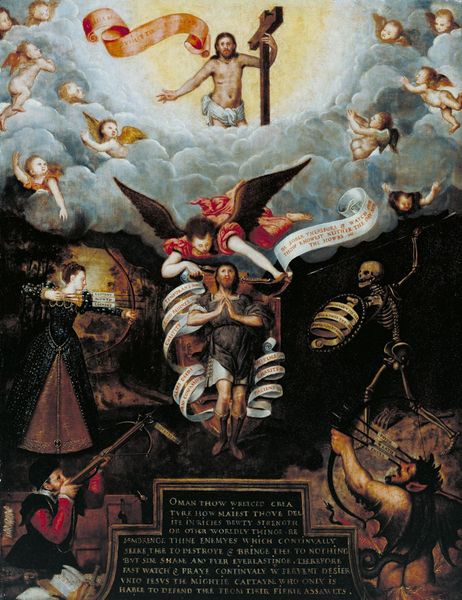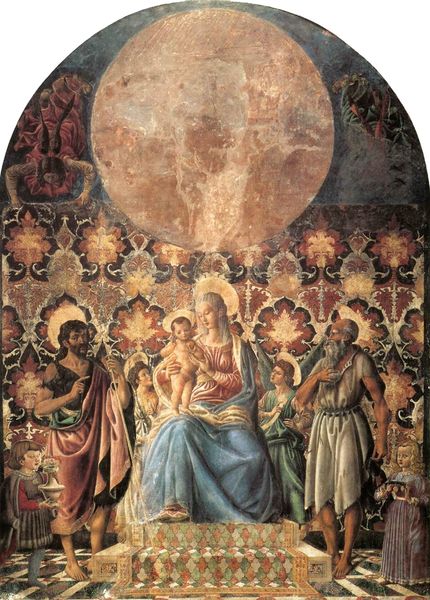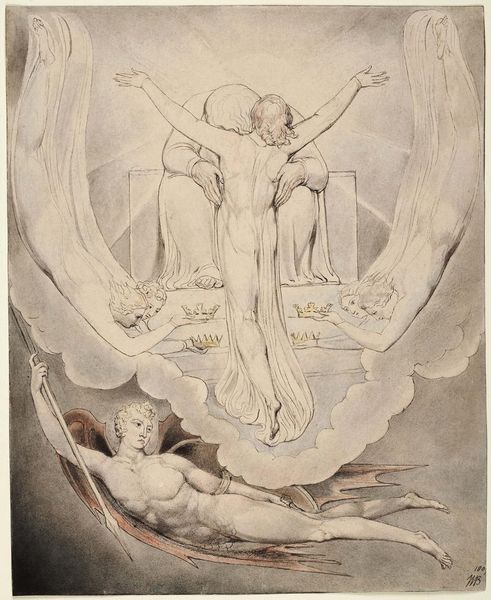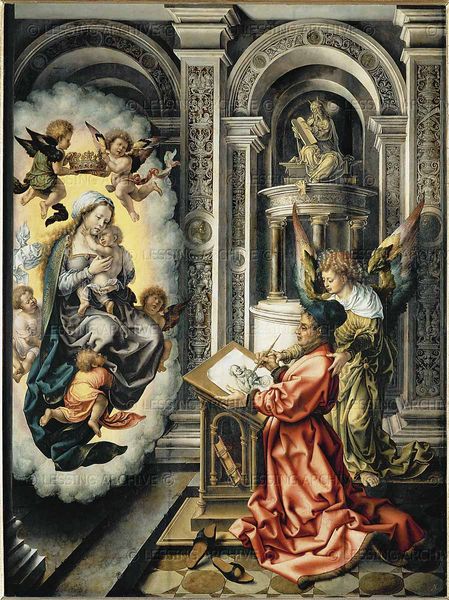
panel, painting, oil-paint
#
portrait
#
panel
#
painting
#
oil-paint
#
landscape
#
figuration
#
11_renaissance
#
oil painting
#
christianity
#
history-painting
#
northern-renaissance
#
christ
Copyright: Public domain
Curator: What strikes me first is how Lucas Cranach the Elder rendered a landscape and the holy figures of the Trinity on a wood panel using oil paint in this work from 1515. Editor: There’s a flatness despite the layering of elements, almost as if the scene is intentionally flattened, deconstructed into constituent symbols, from the baby cherubs ringing the holy scene to the details of Christ's crown of thorns. The painting material itself also is likely a symbol of status at the time. Curator: Indeed, Cranach employed established iconographic codes to reinforce the painting’s themes. God the Father wears a papal tiara and regal vestments and holds an orb representing dominion over the world. Above him, the Holy Spirit is represented as a dove. Editor: So, there's a combination of material representation of worldly power, alongside this very conventional and heavily laden symbolism—oil on panel asserting one kind of cultural value while the figures depicted gesture toward another. The medium becomes part of the message. What kind of value judgements does this contrast expose? Curator: Well, beyond these immediate religious references, consider how Cranach embeds a whole theological system into his landscape, uniting the divine and earthly realms to reinforce established power dynamics. His use of recognizable, repeatable motifs helped the picture function like a visual sermon, hammering home key spiritual and political ideas. Editor: Which circles back to the material—the fact that the piece could be made with a certain degree of mechanical reproduction; this prefigures changes that will accelerate, as the Reformation uses the print press as a crucial propaganda machine, distributing ideas more widely. The choice to represent traditional iconography using novel production methods foreshadows changes underway. Curator: It certainly bridges a cultural moment. The Trinity provides a clear synthesis of Renaissance artistic strategies alongside deep, historical roots in traditional symbolism. Editor: So it does: material and symbolic power converging. Curator: A fitting way to view it.
Comments
No comments
Be the first to comment and join the conversation on the ultimate creative platform.
